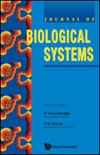SENSITIVITY ANALYSIS AND IMPACT OF AN IMPERFECT VACCINE OF TWO STRAINS OF HEPATITIS B VIRUS INFECTION
IF 1.5
4区 数学
Q3 BIOLOGY
引用次数: 1
Abstract
A mathematical model considering two strains of hepatitis B virus (HBV) chronic carriers, to assess the impact of dose-structured imperfect vaccine, in a population, is designed and analyzed. The model is shown to have a locally and globally asymptotically stable disease-free equilibrium (DFE) whenever its associated reproduction number is numerically less than unity. Numerical analysis of the model shows that with the expected [Formula: see text] minimum efficacy of the first vaccine dose, vaccinating [Formula: see text] of the susceptible population with the first vaccine dose will be sufficient to effectively control the spread of hepatitis B infection. Such effective control can also be achieved if [Formula: see text] of the first vaccine dose recipients take the second dose. Threshold analysis reveals that an imperfect HBV vaccine should have positive or negative population-level effect. Latin hypercube sampling–PRCC analysis illustrates that disease transmission rate, birth rate, natural death rate and proportion of children born with maternal immunity are most influential parameters in the disease dynamics. In this paper, the sensitivity analysis based on mathematical and in addition statistical techniques have been performed to determine the significance of the model parameters. It is observed that a number of the parameters play an important role to determine the magnitude of the basic reproduction number. Sensitivity analysis is achieved to determine model parameters’ importance in disease dynamics. It is observed that the reproduction number is the most responsive quantity to the potent transmission rate of HBV and in addition also vital to control the spread of the disease.两株乙型肝炎病毒感染不完善疫苗的敏感性分析及影响
设计并分析了考虑两种乙型肝炎病毒(HBV)慢性携带者的数学模型,以评估剂量结构不完善疫苗在人群中的影响。当相关繁殖数小于1时,该模型具有局部和全局渐近稳定无病平衡(DFE)。模型的数值分析表明,在预期的[公式:见文]第一次疫苗剂量的最小效力下,用第一次疫苗剂量接种[公式:见文]易感人群将足以有效控制乙型肝炎感染的传播。如果接种第一剂疫苗的人接种第二剂疫苗,也可以实现这种有效控制。阈值分析表明,不完善的乙肝疫苗在人群水平上应该具有正效应或负效应。拉丁超立方体抽样- prcc分析表明,疾病传播率、出生率、自然死亡率和出生时具有母体免疫的儿童比例是影响疾病动态的最重要参数。本文采用了基于数学和统计技术的敏感性分析来确定模型参数的显著性。观察到,一些参数对确定基本再现数的大小起着重要作用。通过灵敏度分析来确定模型参数在疾病动力学中的重要性。据观察,繁殖数是对乙型肝炎病毒的有效传播率最敏感的数量,此外对控制该疾病的传播也至关重要。
本文章由计算机程序翻译,如有差异,请以英文原文为准。
求助全文
约1分钟内获得全文
求助全文
来源期刊
CiteScore
2.80
自引率
12.50%
发文量
31
审稿时长
1 months
期刊介绍:
The Journal of Biological Systems is published quarterly. The goal of the Journal is to promote interdisciplinary approaches in Biology and in Medicine, and the study of biological situations with a variety of tools, including mathematical and general systems methods. The Journal solicits original research papers and survey articles in areas that include (but are not limited to):
Complex systems studies; isomorphies; nonlinear dynamics; entropy; mathematical tools and systems theories with applications in Biology and Medicine.
Interdisciplinary approaches in Biology and Medicine; transfer of methods from one discipline to another; integration of biological levels, from atomic to molecular, macromolecular, cellular, and organic levels; animal biology; plant biology.
Environmental studies; relationships between individuals, populations, communities and ecosystems; bioeconomics, management of renewable resources; hierarchy theory; integration of spatial and time scales.
Evolutionary biology; co-evolutions; genetics and evolution; branching processes and phyllotaxis.
Medical systems; physiology; cardiac modeling; computer models in Medicine; cancer research; epidemiology.
Numerical simulations and computations; numerical study and analysis of biological data.
Epistemology; history of science.
The journal will also publish book reviews.

 求助内容:
求助内容: 应助结果提醒方式:
应助结果提醒方式:


